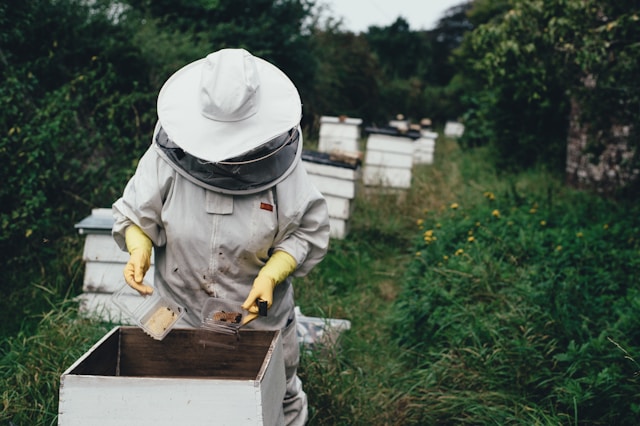Introduction
In a world where bee populations are facing numerous threats, creating a bee-friendly garden is a small but impactful way to support these essential pollinators. By providing a diverse range of flowering plants and adopting bee-friendly gardening practices, you can help sustain local bee populations while enhancing the beauty and productivity of your outdoor space. This comprehensive guide will walk you through the steps to transform your garden into a haven for bees.
Understanding Bee-Friendly Gardening
Bee-friendly gardening is centered around creating an environment that meets the needs of bees throughout their lifecycle. This includes providing food (nectar and pollen), water, shelter, and nesting sites. By incorporating bee-friendly practices into your gardening routine, you can attract a variety of bee species and contribute to their conservation.
Selecting Bee-Friendly Plants
Choosing the right plants is the foundation of a bee-friendly garden. Opt for a diverse selection of flowering plants that bloom at different times of the year to provide a continuous food source for bees. Here are some bee-friendly plant options to consider:
- Native Wildflowers: Native plants are well-adapted to your local climate and soil conditions and provide valuable food and habitat for native bee species. Examples include coneflowers, black-eyed Susans, and native grasses;
- Herbs: Many culinary herbs are attractive to bees and provide a source of both nectar and pollen. Plant herbs such as lavender, thyme, sage, and rosemary in your garden;
- Perennials: Perennial flowers are long-lasting and provide reliable food sources for bees year after year. Consider planting perennials such as bee balm, salvia, yarrow, and aster;
- Fruit Trees: Fruit trees such as apple, cherry, peach, and plum provide abundant blossoms in spring, attracting bees during the critical early season;
- Native Trees and Shrubs: Trees and shrubs are essential for providing nesting sites and shelter for bees. Choose native species such as maple, willow, oak, and serviceberry.
Bee-Friendly Gardening Practices
In addition to planting bee-friendly flowers, adopting bee-friendly gardening practices can further enhance your garden’s appeal to bees:
- Avoid Chemical Pesticides: Minimize or eliminate the use of chemical pesticides and herbicides in your garden, as they can harm bees and other beneficial insects. Instead, opt for natural pest control methods such as handpicking pests, using insecticidal soap, or attracting natural predators;
- Provide Water Sources: Bees need access to clean water for hydration, especially during hot weather. Create a shallow water source in your garden, such as a birdbath or shallow dish filled with pebbles for bees to land on;
- Create Habitat: Incorporate features into your garden that provide nesting sites and shelter for bees, such as bee hotels, bare soil patches, and undisturbed areas of vegetation;
- Plant in Clumps: Planting flowers in large clumps or drifts makes them more visible and accessible to bees, increasing the likelihood of visitation and pollination;
- Practice Sustainable Gardening: Mulch your garden beds with organic materials, compost kitchen scraps, and conserve water to create a healthy, sustainable garden ecosystem.
Conclusion
Creating a bee-friendly garden is a rewarding endeavor that benefits both bees and gardeners alike. By selecting bee-friendly plants, adopting bee-friendly gardening practices, and providing essential resources for bees, you can attract a diverse array of pollinators to your garden and contribute to their conservation. Whether you have a small balcony or a sprawling backyard, there are steps you can take to make your outdoor space a haven for bees. Embrace the beauty and biodiversity of a bee-friendly garden and join the effort to protect these vital pollinators for generations to come.
